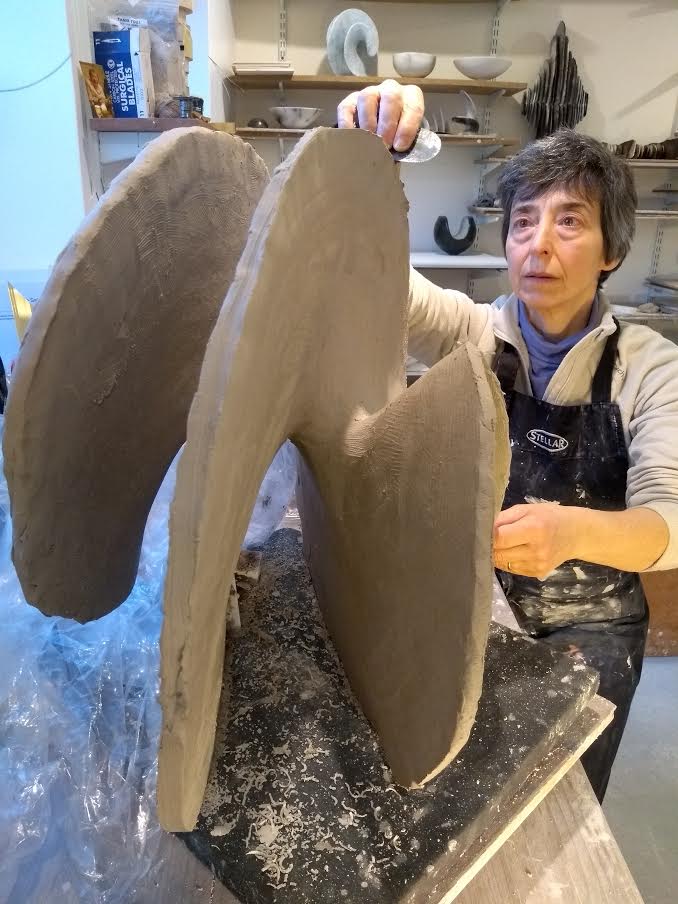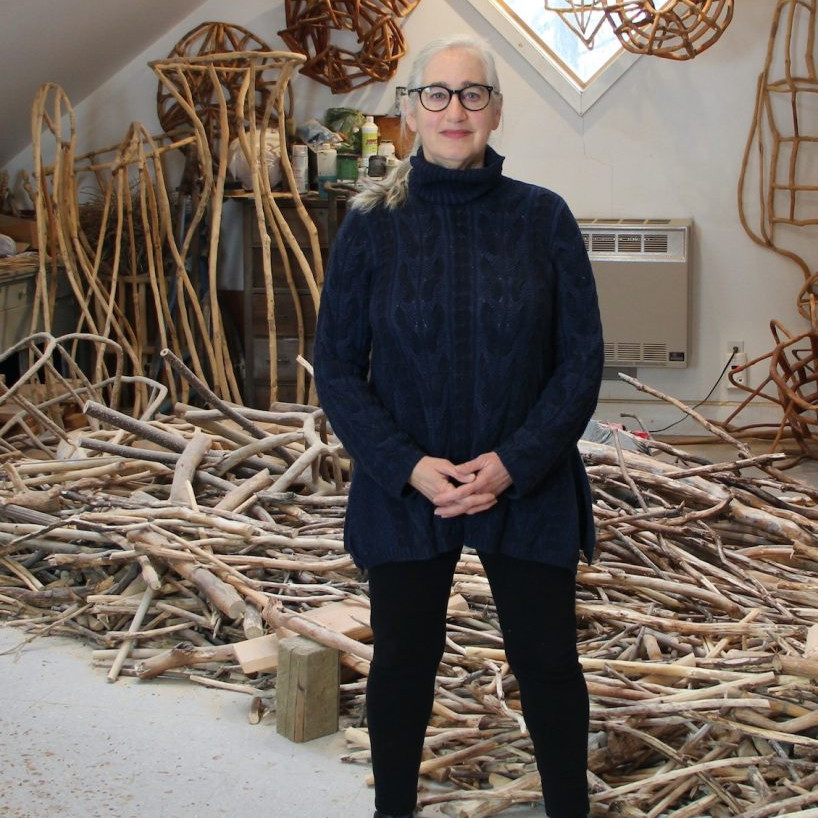Antonia Salmon Ceramic / Sculpture Artist
Can we discuss the interesting past you have and how it has led and developed into the work you do today?
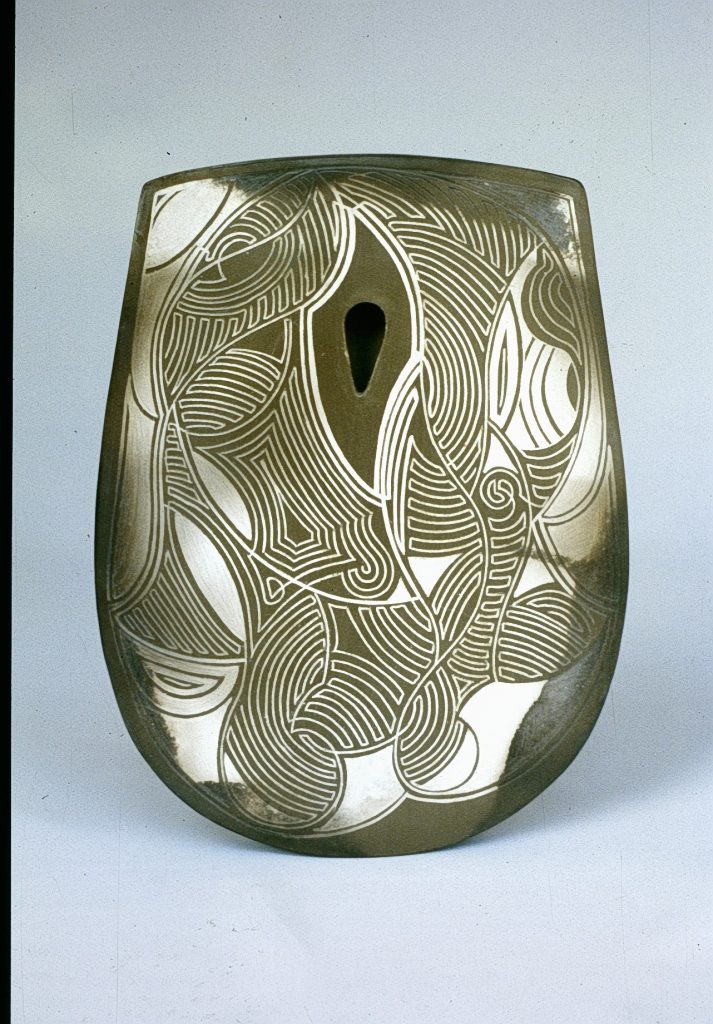
Labarinth Pattern Axe Head
Both my parents worked in the field of visual arts. My mother at 90 years old, is a practicing sculptor, and my father was an architect. I grew up in a home devoted to aesthetic consideration; holidays were spent looking at cathedrals or ancient monuments, drawing, walking, and painting.
The visual arts, beauty and visual integrity are a large part of my upbringing.
You originally went to Sheffield University and studied Geography and Geology. How has this influenced your work?
I chose to study Geography for several reasons: Since childhood I loved looking at maps and imagining journeys within them. I loved studying a subject that is all about human interaction with the natural world. I chose to study in Sheffield because it is near to a beautiful National Park – The Peak District – and I knew that walking in the country would be an important part of my relaxation. Walking over and in the ‘body’ of the landscape is like an immersive experience of contact with sculptural form. I see my sculptures as landscapes too.
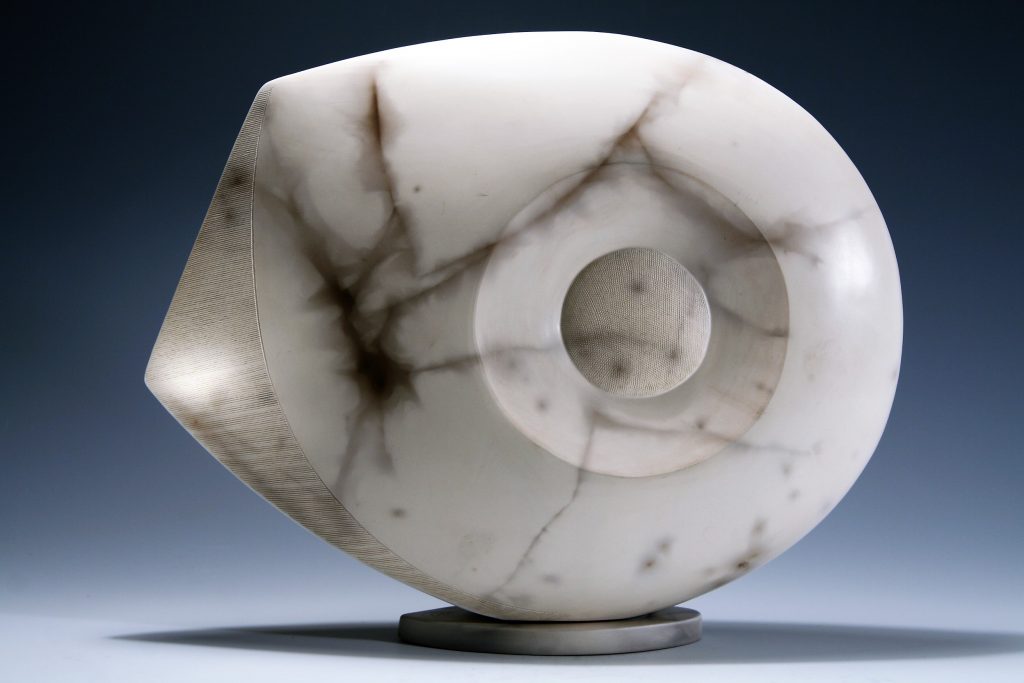
Moon Standing Form, H 29 cms
Then you trained at Harrow in ceramics, how did this career change happen?
I first became interested in working with clay at the age of 17 years. While at university I attended pottery classes for 3 years and spent every vacation working for as a potter’s assistant. By the end of university, I had a choice of continuing as a postgraduate in the study of geomorphology, or re-training in ceramics. My heart made the decision to follow ceramics and the love of land formation has remained an interest.
Following all of this you travelled for a year. Expand on the influence this has had on your work?
While at Harrow I became fascinated by the use, of geometry, particularly in the art and architecture of Islam. Before setting up workshop, I wanted time to spend exploring and drawing in the Middle East and India to extend this interest and widen my vision. A year travelling, painting and meeting many people nourished my creative spirit and shaped the essential focus of my work for many years. I realized that I wanted to make work that would speak to viewers at a deeper level than only the visual or tactile experience.
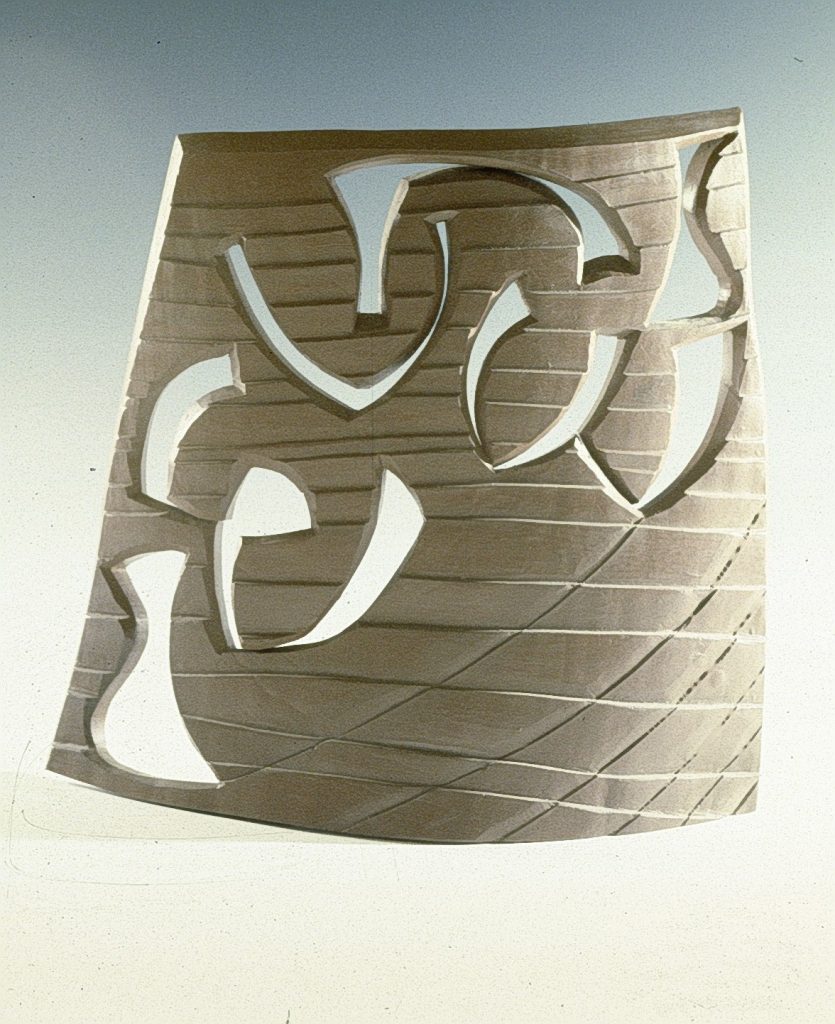
Burnished Screen
In 1989 you returned to Sheffield, comment on the importance of this landscape in you work?
Returning to Sheffield to live and work, meant a return to the local landscape which has became a source of spiritual connection and creative inspiration. I use the inspiration both as a visual reference and in recent years the sounds in nature (water, wind, bird calls, etc) have led to the development of the Surge and Wind Rush Series.
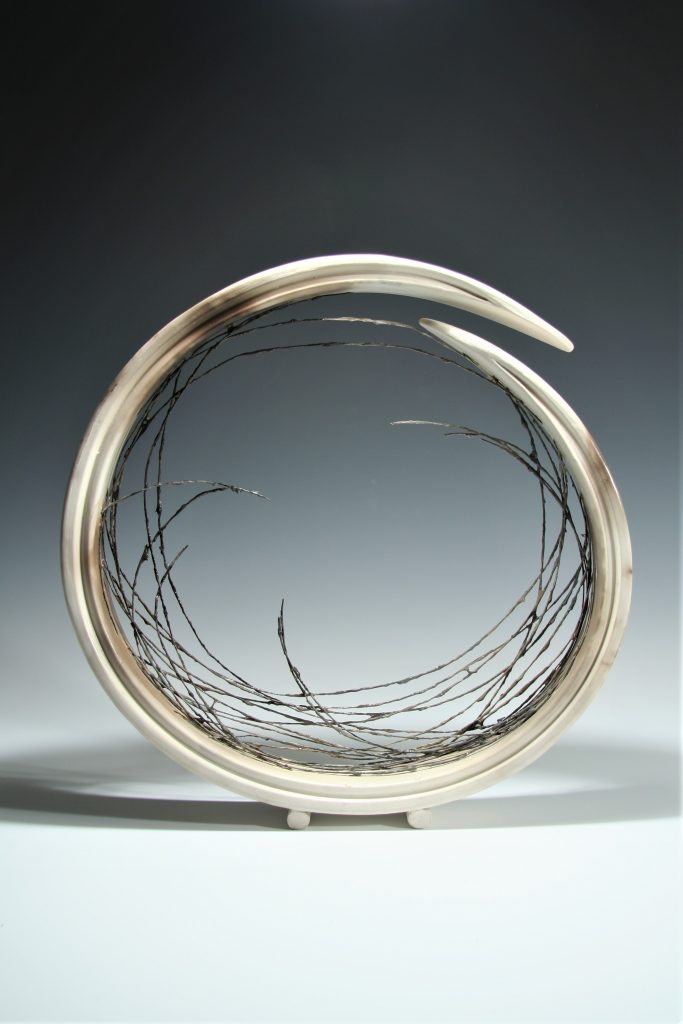 Large wind rush
Large wind rush
Your comment, “The forms I am most drawn to have clarify of line or strong underlying geometry.” Discuss
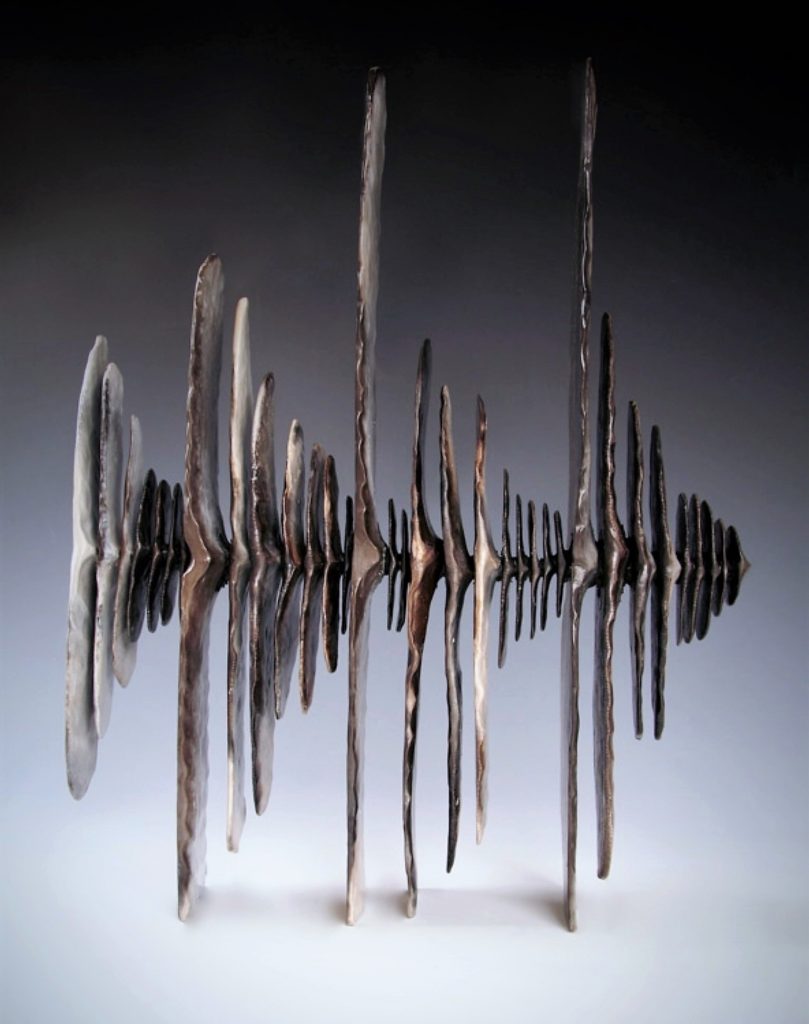
Echo, H 57cm
In nature, as in some of the most beautiful art work there is an unobtrusive fundamental geometry at work. To make sculptures that balance the discipline of geometry and the dynamism of the natural world is my aim. This is not about using geometry in a formulaic way, but as a structural basis.
What made you decide to work entirely on the abstract form?
For me, the best abstract forms speak at many levels of experience; from the sensual to transcendent qualities.
Explain the finished texture of your work?
Many of the sculptures are hand burnished. This is a process of compressing the clay surface repeatedly to give it a hard, smooth and shiny surface. Once burnished, the clay surface is ideal for impressing delicate textures. The contrast of smoothness and fine textured surface which is then smoke-fired and finally wax polished to give a gentle sheen, imparts a subtle timeless sense.
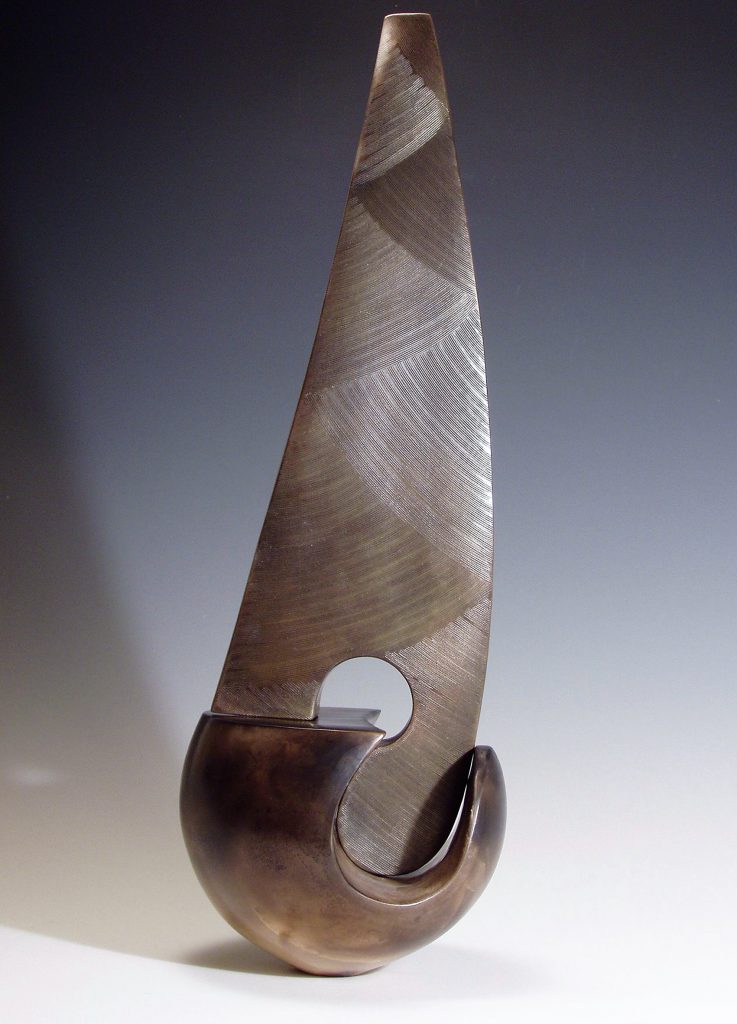
Dark Sail, H 42cms
Your work is in both the UK and Internationally take one piece and explain why this piece was so influential in your career?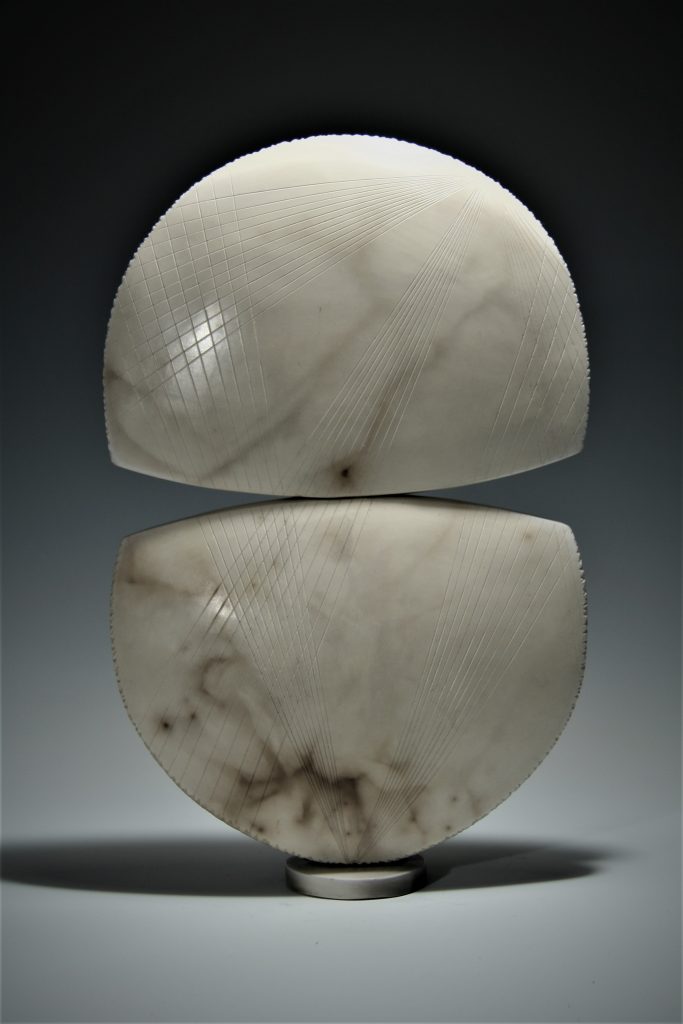
Touch Point
I have always loved looking at the space between and surrounding a form as much as the solid shape itself. Touch Point is made of two separate similar forms, one sitting on the other as a reflection. As a whole the sculpture acts as a standing form, sitting with stillness. The surface is burnished smooth and then incised with groups of radiating lines that give a sense of vitality and sharp dynamism. The work says something about connection, stillness and dynamism all in one. It has attracted attention from private and corporate clients internationally and there are examples held in collections all over the world.
Can you explain the use of smoke firing in your work?
Smoke firing is an ancient process of firing pots in wood or shavings over several days. I love this way of firing for several reasons. There is spontaneity to this process, free of the human hand, which gives the work a timeless quality, and lifts it beyond any self-conscious decoration. It also means that the beautiful material of fired ceramic is not covered in glaze.
Take us through the process of your most current commission
My current commission is for two large Surge Sculptures which will be located, in the lobby of a Middle Eastern hotel. The process from initial enquiry to commissioning has been over 9 months. The main considerations and technical concerns have risen due to the size of the works which are 60cm in height and will be in a busy public setting. I have used a gritty clay and incorporated strengthening materials in order to build at this scale. The structure is complex and the process of making is over several months, with the most challenging process of firing, yet to come. One of the most difficult aspects is physically moving and the work because of its weight and fragility.
What is the importance of demonstration and lecturing for you personally? Why is this such an important part of your working life?
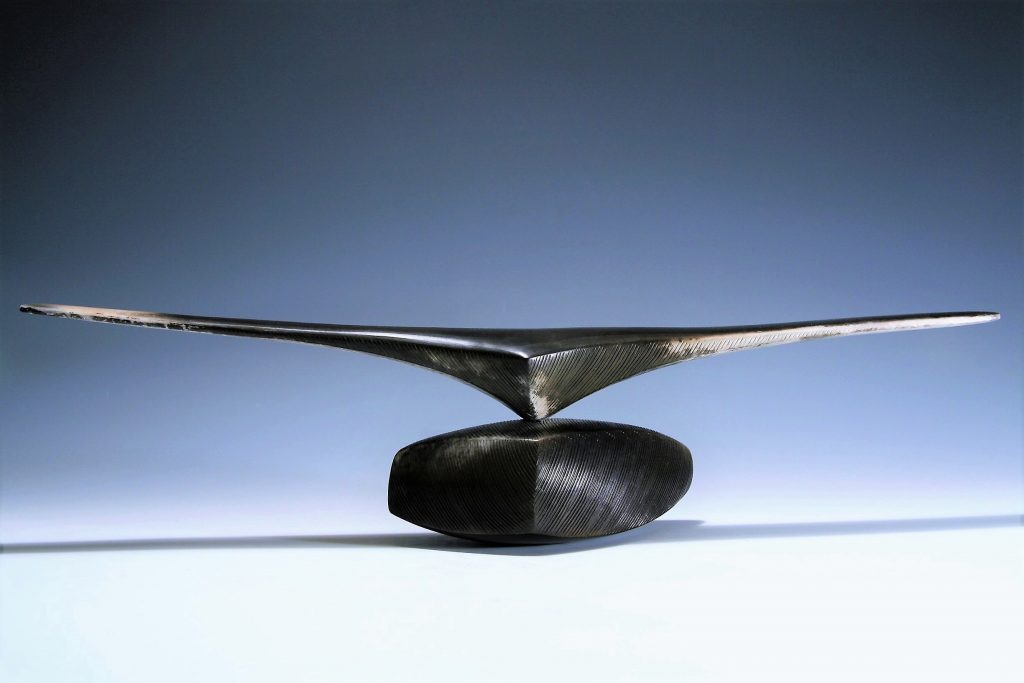
Winged Form, W 54cm
I am a very private person and the creative process is a private process. Demonstrating has therefore been challenging for me, always. I love to communicate about the source of inspiration and thinking behind the work. Increasingly, however, the most satisfying aspect of sharing the work is when someone really takes time to look, and there is a silent communication and understanding of the deeper connection being made, without many words. The knowledge about the sculpture would be incomplete without the willingness to engage with it.
Contact details:
Antonia Salmon
antoniasalmon.sheffield@googlemail.com
Antonia Salmon, Sheffield, UK
Interview by Deborah Blakeley, February 2019
Think a colleague or friend could benefit from this interview?
Knowledge is one of the biggest assets in any business. So why not forward this on to your friends and colleagues so they too can start taking advantage of the insightful information the artist has given?
Other artists you may be interested in:


